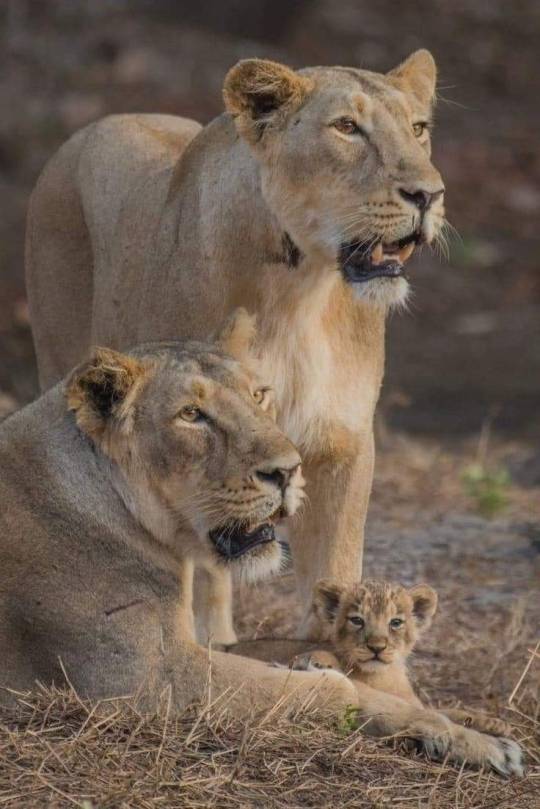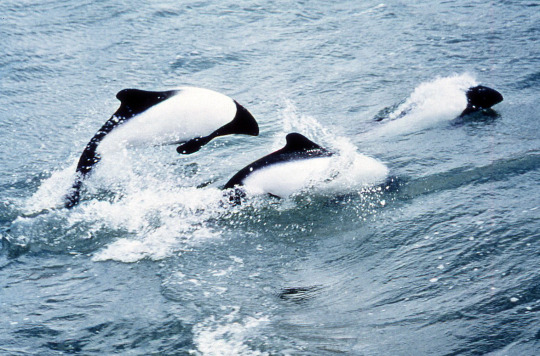Text
Here's what the adult pigs look like

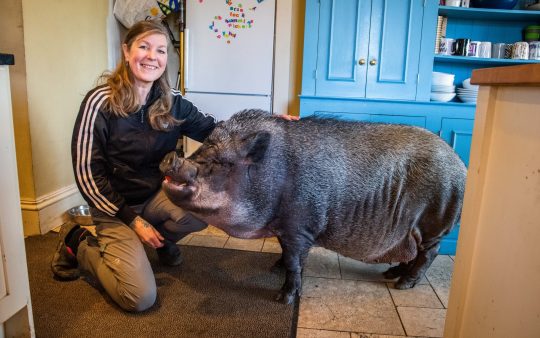
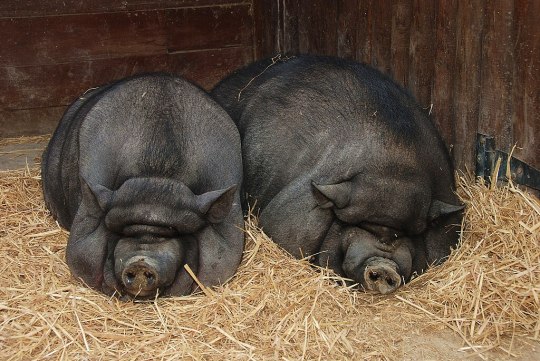
There are dedicated Vietnamese pot-bellied pig rescuers because so many people are duped into buying a "miniature pig" that gets way bigger than they expected, so the adult pigs are abandoned
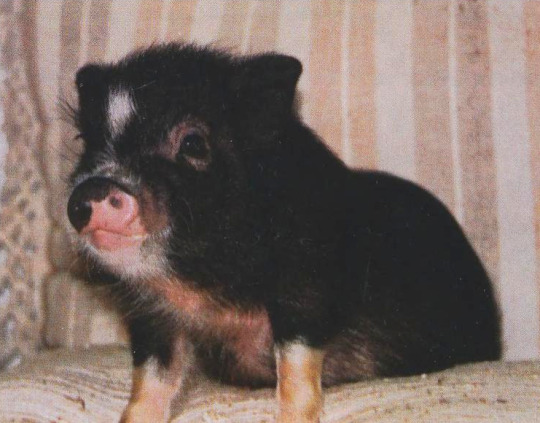
Vietnamese pot-bellied pig named Winston
By: Lil' Porkers Pig Pals
From: Pot-bellied Pigs and Other Miniature Pet Pigs
1992
2K notes
·
View notes
Text
haaah? what the hell is this? some sort of damn beast... it's kind of badass

6K notes
·
View notes
Text
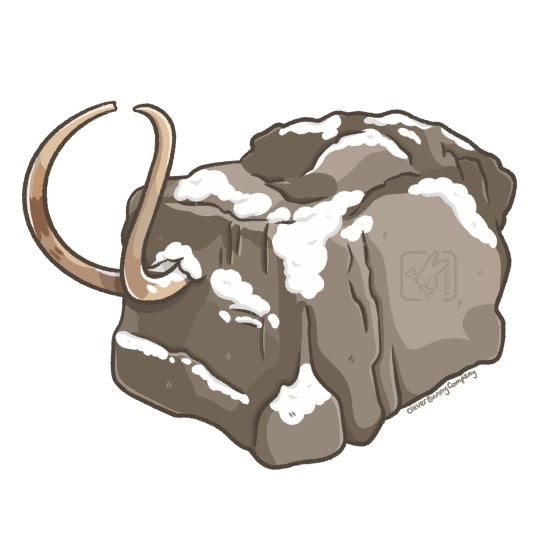
Mammoth Cube Mammoth Cube Mammoth Cube




Known as the Jarkov Mammoth, this specimen was found in Siberia. The 23 tonne block of mud and ice was lifted to an ice cave where the mammoth inside was recovered and studied.
2K notes
·
View notes
Text
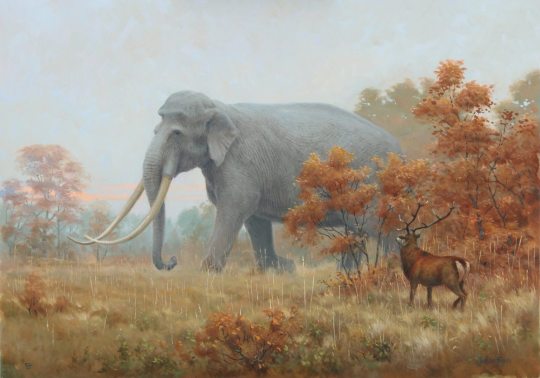
Julian Friers
"The enormous Straight-Tusked Elephant (Palaeoloxodon antiquus) that once roamed across much of Europe, trudging across the landscape in view of a Red Deer".
649 notes
·
View notes
Text
I think you should start romanticizing photos of the humble saiga antelope, the way you romanticize greyscale flash photos of deer
157 notes
·
View notes
Text
Pachycetinae: The Thick Whales
Oh look I'm way behind not only on my work with wikipedia but also in regards to summarizing it on tumblr. Good thing, three of the pages I've worked on these past few months can just be summed up in one post because they are all one family.
So Pachycetinae, at the most basic level, are basilosaurid archaeocetes, the group that famously includes Basilosaurus and Dorudon. Reason I've picked up the articles in addition to my usual croc work, basically a friend and I noticed how lacklustre many pages are and stupidly decided to start revising all of Cetacea (pray for me).
Currently theres two genera within the group. Pachycetus aka Platyosphys aka Basilotritus, which is a whole mess I will get into at the end for those interested, and Antaecetus, which I'll just call "the good one" for now. Among those are three species. Pachycetus paulsonii (or Basilotritus uheni) from continental Europe (Germany and Ukraine mostly), Pachycetus wardii (Eastern United Staates) and Antaecetus aithai (Morocco and Egypt)
Picture: Pachycetus and Antaecetus by Connor Ashbridge


So the hallmark of Pachycetines, as the name would suggest, is the fact that their skeletons are notably denser than that of other basilosaurids. The vertebrae, the most abundant material of these whales, are described as pachyostatic and osteosclerotic. The former effecitvely means that the dense cortical bone forms thickened layers, while the latter means that the cortical bone, already forming thickened layers, is furthermore denser than in other basilosaurids with less porosities. The densitiy is increased further by how the ribs attack to the vertebrae not through sinovial articulation but through cartilage, so adding even more weight to them. Overall this is at times compared to manatees, famous for their dense skeletons.
Pictured below, the currently best preserved pachycetine fossil, an individual of the genus Antaecetus from Morocco.

Now there are some interesting anatomical features to mention that either differ between species or just can't be compared. For example the American species of Pachycetus, P. wardii, shows a well developed innominate bone, basically the fused pelvic bones. This is curious as one would think of it as a more basal feature, with derived whales gradually reducing them. The skull is best preserved in Antaecetus and has a very narrow snout. One way to differentiate the two is by the teeth. Pachycetus has larger, more robust teeth while that of Antaecetus are way more gracile and is thought to have had a proportionally smaller skull (in addition to being smaller than Pachycetus in general).
All of this has some interesting implications for their ecology. For instance, why the hell are they so dense? Well its possible that they were shallow water animals using their weight as ballast, staying close to the ocean floor. This would definitely find some support in the types of environments they show up in, which tend to be shallow coastal waters. There are some Ukrainian localities that suggest deeper waters, but that has been interpreted as being the result of migration taking them out of their prefered habitat.
Now while pachycetines were probably powerful swimmers, their dense bones mean that they were pretty slow regardless. And to add insult to injury, they were anything but maneuverable. Remember those long transverse processes? Turns out having them extend over the majority of the vertebral body means theres very little space for muscles in between, which limits sideways movements.
From this one can guess that they weren't pursuit predators and needed to ambush their prey. What exactly that was has been inferred based on tooth wear. Basically, the teeth of Pachycetus show a lot of abrasion and wear, not dissimlar to what is seen in modern orcas that feed on sharks and rays. And low and behold, sharks are really common in the same strata that Pachycetus shows up in. Now since Antaecetus had way more gracile teeth, its thought that it probably fed on less well protected animals like squids and fish.
Below: Pachycetus/Basilotritus catching a fish by @knuppitalism-with-ue

The relationship between pachycetines and other basilosaurids is wonky, again no thanks due to Pachycetus itself being very poorly known. Some studies have suggested that they were a very early branching off-shoot, in part due to their prominent hip bones, but in the most recent study to include them, the description of Tutcetus, they surprisingly came out as not just the most derived basilosaurids but as the immediate sister group to Neoceti, which includes all modern whales. Regardless, in both instances they seem to clade closely with Supayacetus, a small basilosaurid from Peru.
And now for the part that is the most tedious. Taxonomy and history.
Remains of pachycetines have been known for a while and were first described as early as 1873 by Russian scientists. To put into perspective how old that is. The material's history in science predates both World Wars, the collapse of the Russian Empire and even the reign of Tsar Nicholas II. Now initially the idea was to name the animal Zeuglodon rossicum, but the person doing the actual describing changed that to Zeuglodon paulsonii reasoning that it would eventually be found outside of Russia (something that aged beautifully given that Ukraine would eventually become independent).
And this is where the confusion starts to unfold. Because at the same time people unearthed pachycetine fossils in Germany too, which would come be given the name Pachycetus (thick whale) and be established as two species. Pachycetus robustus and Pachycetus humilis, both thought to be baleen whales.
Pictured below: Pierre-Joseph van Beneden who coined Pachycetus and Johann Friedrich Brandt who described Zeuglodon paulsonii. Beneden easily has the better beard.
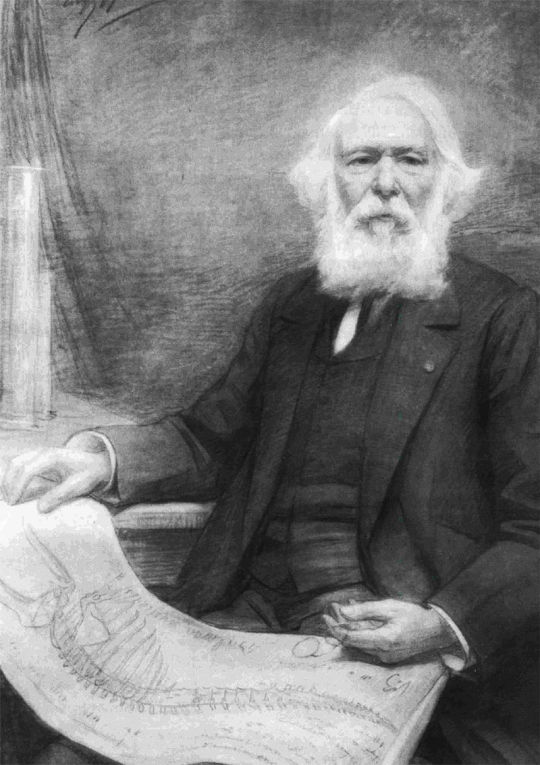

These latter two names however were later rejected in 1935 by Kuhn and lumped into other species, whereas Zeuglodon paulsonii was elevated to a full on new genus by Remington Kellogg in 1936. For those curious, Platyosphys means "broad loin", in combination with the species "Paulson's broad loin" to the amusement of some friends of mine.
And then people stopped caring and we have a nearly 70 year research gap. Eventually Mark D. Uhen found fossil material in the United States, but interpreted those fossils as being part of the genus Eocetus, naming them Eocetus wardii, a move that many following researchers disagreed with.
Then in 2001 a new species of Platyosphys, P. einori, was named. It's bad, moving on. More importantly, we got the works of Gol'din and Zvonok, who attempted to bring some clarity into the whole thing. To do so they rejected the name Platyosphys on account of the holotype having been lost sometime in WW2 and picked out much better fossil material to coin the genus Basilotritus ("the third king" in allusion to Basilosaurus "king lizard" and Basiloterus "the other king", isn't etymology fun?). They erected the type species Basilotritus uheni and then proclaimed Eocetus wardii to also belong into this genus, making it Basilotritus wardii.
This move was however not followed by other researchers. Gingerich and Zhouri maintained that regardless of being lost, Platyosphys is still valid and can be sufficiently diagnosed by the original drawings from the 19th and early 20th century. And to take a step further they added a new species, Platyosphys aithai (weird, why does that name sound familiar).
Then Van Vliet came and connected all these dots I've set up so far, noting that the fossils of Platyosphys are nearly identical to those of Pachycetus. This lead to the fun little thing were "paulsonii", applied first to Zeuglodon in the 1870s, takes priority over "robustus", coined just a few years later, BUT, the genus name Pachycetus easily predates Platyosphys by a good 60 years. Subsequently, the two were combined. Platyosphys paulsonii and Pachycetus robustus became Pachycetus paulsonii (simplified*). Van Vliet then deemed humilis to be some other whale and carried over Basilotritus uheni, Basilotritus wardii and Platyosphys aithai into the genus Pachycetus. *Technically Pachycetus robustus was tentatively kept as distinct only because of how poorly preserved it was, making comparisson not really possible.
Then finally in the most recent paper explicitly dealing with this group, Gingerich and Zhouri came back, killed off P. robustus for good, sunk Pachycetus uheni into Pachycetus paulsonii for good measure and decided to elevate Pachycetus aithai to genus status after finding a much better second skeleton, coining Antaecetus (after the giant of Greek myth).
And that's were we are right now. Three species in two genera, but only one of them is actually any good. So perhaps at some point in the future we might see some further revisions on that whole mess and who knows, perhaps Basilotritus makes a glorious comeback.
To conclude, sorry about the lack of images, despite the ample history theres just not much good material aside from that one Antaecetus fossil and I didn't want to include 5 different drawings in lateral view.
Obligatory Wikipedia links:
Pachycetinae - Wikipedia
Antaecetus - Wikipedia
Pachycetus - Wikipedia
Ideally Supayacetus will be the next whale I tackle, distractions and other projects not withstanding (who knows maybe I'll finally finish Quinkana)
157 notes
·
View notes
Text
btw przewalskis horses are also currently living in abandoned structures in the chernobyl exclusion zone!

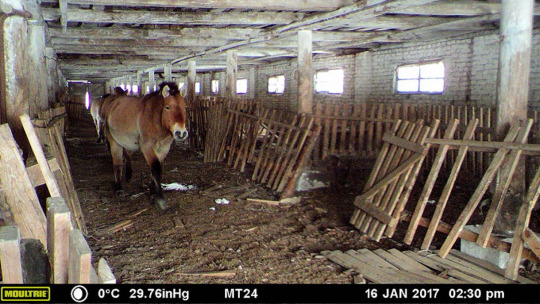
https://www.horseandhound.co.uk/news/przewalksi-wild-horses-chernobyl-699588
21K notes
·
View notes
Text
Um. Sir… you can’t be in here :/ yeah there’s no dogs allowed
4K notes
·
View notes
Text
Elasmotherium sibiricum being called the Siberian unicorn was an internet joke until Kostintsev et al. 2019 brought it into the scientific literature
I think I stumbled upon some kind of ichthyological forbidden knowledge. Opened up a book of names that were never meant to be read.
You've probably heard of "can-opener smoothdream", right? It's practically a meme by now.
But the thing is, it's a deep-sea fish. And deep-sea fish have historically not had English names because nobody drops them into the conversation over a hot cuppa. Sure, there's generic stuff like hatchetfish and barreleye, but when you want to refer to the actual fish you're probably saying such euphonious phrases as Diretmus argenteus, Sternoptyx diaphana, or maybe even Opisthoproctus soleatus.
So whence "can-opener smoothdream"? Certainly no non-ichthyologist has ever used that name. It's not even a direct translation of the scientific name Chaenophryne longiceps - that would be "long-headed gape-toad". Which to me is even cooler than "can-opener smoothdream".
But I digress. The "dream" bit comes from the anglerfish family Oneirodidae, from oneiros, "dream", because those marvelous fishes look like they came out of a dream (Pietsch, 2009).
Note that Pietsch (2009), more or less the anglerfish bible, uses English names at the genus level only. So Chaenophryne is the smoothhead dreamers genus but no mention is made of "can-opener smoothdreams". So no luck there.
Wikipedia, root cause of a lot of misinformation, has this to say.

"Longhead dreamer" is a far more accurate name. And in fact, despite Wikipedia prioritizing "can-opener smoothdream" (because it's funny?), the links listed use "longhead dreamer" and "smoothhead dreamer" as the name and "can-opener smoothdream" as an alternative.
So. Again. Where did "can-opener smoothdream" come from?
The answer, as it turns out, lies with McAllister (1990).
In the book A List of the Fishes of Canada, ichthyologist D. E. McAllister sought out to list every single fish known to Canadian waters, providing both an English and a French name.
And when there wasn't an English name, like for most deep-sea fishes, he arbitrarily gave them a name. And his names "differ in many instances from the widely accepted names" (Holm, 1998)
This had varying results. This is his name for one of the netdevil anglerfishes.

The humpback anglerfish or blackdevil anglerfish becomes a werewolf (????).

This one is just confusing.

The white-spotted lanternfish or Rafinesque's lanternfish instead becomes...

And most embarrassingly, the Mediterranean spiderfish gets saddled with something that "violates the tenet of good taste" (Holm, 1998).

This then is the original source of "can-opener smoothdream". It was invented by an ichthyologist in 1990, and has seen little to no use outside of how bizarre the name is.

Maybe McAllister's goofier names will catch on. Who knows? They certainly aren't very popular in the scientific community though.
References
Holm, E. (1998) Encyclopedia of Canadian Fishes (review). The Canadian Field-Naturalist, 112, p. 174-175.
McAllister, D. E. (1990) A List of the Fishes of Canada. National Museum of Natural Sciences, Ottawa.
Pietsch, T. W. (2009) Oceanic Anglerfishes: Extraordinary Diversity in the Deep Sea. University of California Press, Berkeley.
5K notes
·
View notes
Text
Saber-toothed cats are pretty neat ecologically, y'know
39 notes
·
View notes
Text

This Amphicyon got lucky! It's prey, a large male Oncorhynchus rastrosus already spawned and was in the process of dying.
1K notes
·
View notes
Text

Fun fact: Dire wolves were actually not wolves, as a study in 2021 shows this large and very common Pleistocene dog was actually part of its own genus, Aenocyon, not Canis. Some of its modern day relatives are notable for more reddish fur and even within Canis the integument can vary quite a bit. That's why I showed the animal here not as wolf like as it is usually depicted.
548 notes
·
View notes

